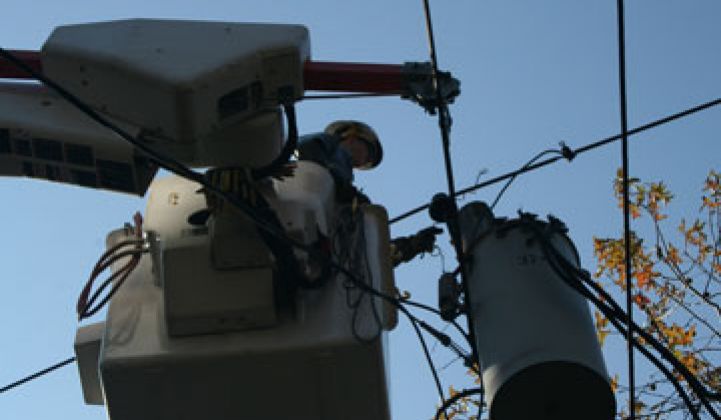When Superstorm Sandy battered the Northeast in October, Baltimore Gas & Electric was only about 10 percent finished with its smart meter deployment.
But a little goes a long way. At the time, Jeanette Mills, chief customer officer at BGE, noted that when a feeder has been fixed, utility reps still have to check with individual customers, and traditionally about two-thirds of customers do not pick up the phone to confirm if their power is back. With smart meters, the utility can check without needing someone to be home or sending a truck out.
During a recent webinar with Greentech Media, Tom Humphreys, project manager of advance meter capabilities at BGE, said that even the partial advanced metering deployment eliminated 387 jobs in the outage management system by being able to ping meters to confirm whether they were on or off. PECO had more than 6,000 avoided or more effective truck rolls after Sandy because of its partial smart meter implementation.
Even so, it’s early days for BGE. During that storm, utility workers were still manually creating lists to go into the outage management system (OMS), but in the future the information from the Silver Spring Networks metering network will automatically be sent into the OMS. “We’d like to take even more advantage of last-gasp alerts [from meters when the power goes out] and integrate them into OMS,” added Humphreys. “We’re still installing meters, so we’re not there yet.”
Besides using the meters to tell if there’s an outage, or to determine if it’s been restored, BGE will also be using the network to message customers and let them know that there has been an outage, in case they may be at work or if it’s a second home.
Many of these functionalities are similar to what other utilities are doing with their advanced metering. But BGE is also hoping that there will be novel applications that the Silver Spring system will be able to handle in years to come. “Putting in a system that is scalable is really important,” Neel Gulhar, manager of smart grid initiatives at BGE, said about the choice to go with Silver Spring, which recently had its IPO. “Right now, we’re really just scratching the surface.”
Another application that is not too far in the future is BGE’s Smart Energy Rewards program that will officially roll out this summer after four years of pilots. “We’ve found that a peak-time rebate is as effective as critical peak pricing,” Ryan Palacheck of Accenture, which is providing consulting support, said of the program. “Our thinking is that a peak-time rebate is the right answer because it’s the right way to train customers without introducing risk to them.”
The residential program will be called about six to ten times each summer with customers receiving $1.25 for every kilowatt-hour they reduce below the average baseline for their home by adjusting the AC. Opower will send alerts to participants through their chosen medium and at the end of each event, the MDM system, provided by Oracle, will calculate how much each customer saves, which Opower will then deliver back to the participant.
The upgraded residential demand response is just the tip of the iceberg for BGE. There is a huge amount of data coming off the new systems, said Gulhar. “The data is completely relevant to the utility industry,” he added, “but we’re only analyzing a very small portion of it right now.”



